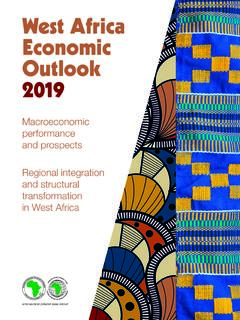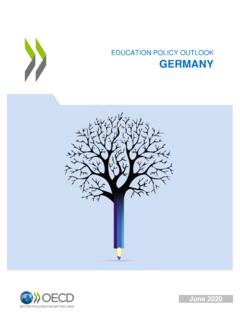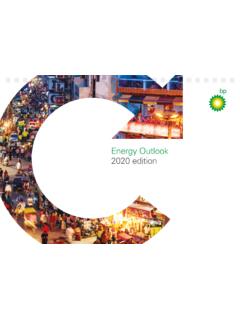Transcription of OVERVIEW OF THE SOUTH AFRICAN TEXTILE INDUSTRY
1 CLUSTER REPORT 1/2017 outlook ON THE SOUTH AFRICAN COTTON TEXTILE INDUSTRY To understand the current status of the TEXTILE and clothing INDUSTRY , it is important to know about all the previous developments, programmes and arrangements, international and local, that had an effect on the said INDUSTRY . For many years the international trade in textiles and clothing was subjected to bilateral quotas negotiated under the Multifibre Arrangement (MFA) in terms of the General Agreement on Tariffs and Trade (GATT) (later the World Trade Organisation). The integration of the TEXTILE and clothing sectors into GATT took place over a couple of years, from January 1995 onwards, to be terminated on 1 January 2005.
2 During this period many Eastern (Chinese) companies invested in TEXTILE and clothing manufacturing operations in SOUTH Africa. However, with the termination of the MFA at the end of 2004 many of these companies closed overnight and moved back to their homeland. [Government s response to the influx of imports mainly from China through the imposition of quotas over the period 2007 to 2008, proved largely ineffective against the surge of low-cost textiles and clothing.] A feature of the new SOUTH Africa in the 1980 s was that the demand for variety was not very different to that of the sophisticated first world.
3 The overall level of consumption, however, remained relatively low, totally no more than a third and less than that of the developed countries in the West. At that stage the total local per capita consumption of all TEXTILE fibres was less than 7 kg, represented by all end usage. The development of both fashion and variety represented the problem of comparatively low volumes and high variety, which tended to push production costs up higher than those of our overseas competitors. The problem was aggravated by the aggressive and often price-disruptive tactics of principal exporting countries in the East.
4 The need to extend a degree of protection to the INDUSTRY was recognized, and the then Board of Trade and INDUSTRY (now ITAC) undertook various investigations that led to reasonable levels of protection. Combined with this, quantitative import control (designed principally to protect the Balance of Payments) added an element of additional protection. The combined effects of tariffs and quantitative controls led to a growth in the demand for woven fabrics alone of 150 per cent between 1949 and 1981. At this latter date, fully 80 per cent of the local demand for both woven and knitted fabrics was met by local production.
5 This was backed by local production of cotton and wool, as well as by the local manufacture of synthetic spun and filament yarns. Import penetration did however escalate from 1988 onwards. Import control was removed in the mid-1989 and the level of protection was materially reduced in the case of the ad valorem levels. 2 From 1988 to 1993 new investments and upgrading of technology were hampered due to surcharge levied on imported machinery (and other products) to protect the Balance of Payments. Over the years Government announced various programmes for the local TEXTILE and clothing industries, like the Structural Adjustment Programme (SAP) in 1989, which offered duty-free imports based on export volumes, for a period of 5 years.
6 At the same time the General Export Incentive Scheme (GEIS) was introduced which offered TEXTILE manufacturers an export incentive based on export value. GEIS was abolished on 11 July 1997. In 1994 the SAP Scheme was replaced by the Duty Credit Certificate Scheme (DCCS) that offered a customs duty credit reward for export performance. The initial recommended SAP Scheme was based on two legs, namely funds for investments and the duty-free imports based on exports. However, Government only approved the tariff side and rejected the monetary side of the programme.
7 The SAP Scheme proved to be ill-considered and highly disruptive that ultimately led to the destruction of certain sectors of the INDUSTRY , for example jerseys. This situation was aggravated by the excessive dumping of TEXTILE products from the East into SOUTH Africa, as well as fraud and inadequate Customs controls. On 12 June 1995 the Long Term Strategy for the TEXTILE Pipeline was announced. The plan entailed the phase-down of tariffs over eight years. The TEXTILE INDUSTRY has embraced the principles of the GATT and the philosophy of trade liberalization, and the challenge to become more efficient and competitive by remodeling itself.
8 Since 1995 large capital investments have already been made the improved financial performance of some of the INDUSTRY s major companies provided concrete evidence that the INDUSTRY was determined to succeed. Various trade blocs were created that affected the local TEXTILE and clothing industries, for example the bilateral trade agreements with neighbouring Zimbabwe and Malawi, the Southern AFRICAN Development Community (SADC) since 2000, the European Union (EU) since 2000, and the USA Africa Growth and Opportunity Act (AGOA) since October 2000. In terms of AGOA the preferential treatment was never extended to yarns, fabrics and domestic textiles , but only to clothing.
9 At the beginning of 2002, the tariff structure on textiles and clothing was drastically affected with the removal of the alternate specific duties, which heralded the onset of illegal imports and undervalued imports, especially from the East. Since 2002 the TEXTILE and clothing sectors were characterized by major changes in the INDUSTRY . A new interim programme called the TEXTILE and Clothing INDUSTRY Development Programme (TCIDP) was announced during 2006. A new programme for SOUTH Africa, which is WTO compliant, and called the Production Incentive Programme, has then been developed.
10 It consisted of two components (an Upgrade Grant and an Interest Subsidy for Working Capital) and should be administered by the IDC, to run until March 2017. The Production Programme was introduced during 2010, to be applicable until March 2017. During 2008 the dti launched a new general incentive programme called the Enterprise Investment Programme (EIP), which included the Manufacturing Investment Programme (MIP), to be available 3 until the end of 2014. During 2009 the dti also launched the Clothing and TEXTILE Competitiveness Improvement Programme (CTCIP), to be applicable until 2014 (but still applicable) and administered by the IDC.








